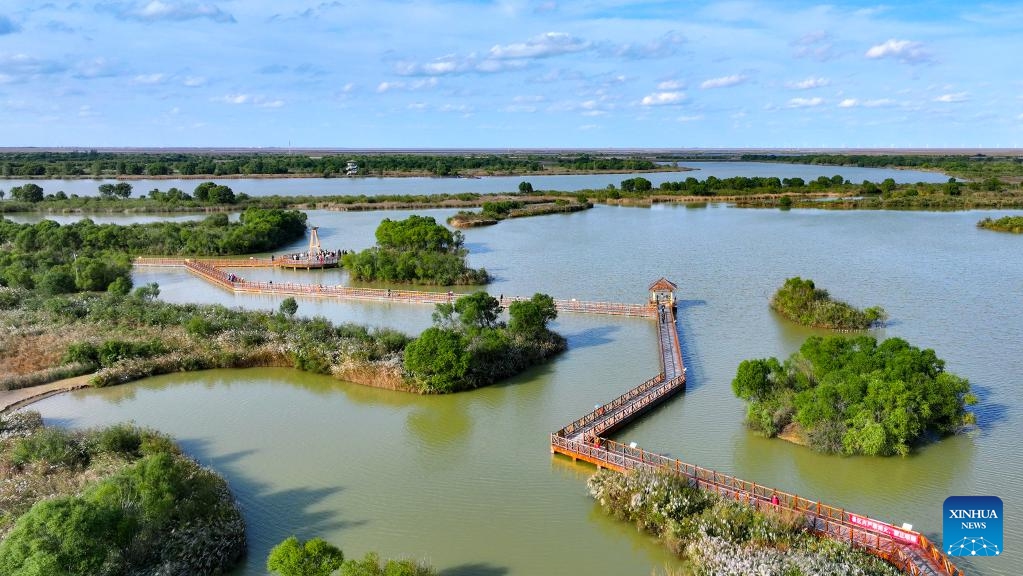How Nuclear Technology Tackles Plastic Pollution – International Atomic Energy Agency

Global Efforts to Combat Marine Microplastic Pollution in Alignment with Sustainable Development Goals
Advancing Scientific Innovation for Ocean Health (SDG 9, SDG 14)
- Nuclear-derived imaging techniques are being utilized to identify minute microplastic particles in marine environments.
- This advanced scientific application allows for the detection of pollutants in seawater, beach sand, sediment, and marine organisms, directly supporting target 14.1 of SDG 14, which aims to prevent and significantly reduce marine pollution of all kinds.
- The development and dissemination of such technologies contribute to SDG 9 by fostering innovation and upgrading the scientific capabilities of institutions worldwide.
Building Global Partnerships and Capacity (SDG 17, SDG 14)
- The NUTEC Plastics initiative equips laboratories globally with the necessary technology and technical expertise to monitor marine microplastic pollution.
- A robust global partnership, the NUTEC Plastics Global Marine Monitoring Network, has been established, connecting over 100 laboratories to facilitate the sharing of data and expertise, embodying the principles of SDG 17.
- Capacity-building efforts through the IAEA technical cooperation programme have successfully trained more than 400 scientists in advanced monitoring and analysis techniques.
Monitoring and Data Collection in Critical Ecosystems (SDG 14)
- IAEA expert missions have been deployed to ecologically vital and remote areas, such as Antarctica and Ecuador’s Galápagos Islands, to gather baseline data and build regional sampling capacity.
- Field research has confirmed the presence of microplastics in these remote ecosystems, underscoring the global scale of marine pollution.
- These findings provide critical data for policymakers and support global efforts to conserve and sustainably use the oceans, seas, and marine resources for sustainable development, as outlined in SDG 14.
SDGs Addressed in the Article
-
SDG 14: Life Below Water
- The article’s central theme is the monitoring of microplastic pollution in the ocean. It discusses the use of nuclear-derived techniques to identify plastic particles in “seawater, beach sand, sediment and in marine organisms.” This directly addresses the goal of conserving and sustainably using the oceans, seas, and marine resources.
-
SDG 17: Partnerships for the Goals
- The article highlights a global collaborative effort led by the IAEA. The NUTEC Plastics initiative “equips laboratories worldwide,” connects “over 100 laboratories worldwide” through a network for “sharing data and expertise,” and has “trained” over 400 scientists. This exemplifies the strengthening of global partnerships for sustainable development through technology sharing, knowledge transfer, and capacity-building.
Specific SDG Targets Identified
-
Target 14.1: Reduce Marine Pollution
- This target aims to “prevent and significantly reduce marine pollution of all kinds, in particular from land-based activities, including marine debris.” The article’s focus on sampling, analyzing, and monitoring microplastic pollution through NUTEC Plastics is a foundational activity for understanding the scale of marine debris and informing actions to reduce it. The missions to Antarctica and the Galápagos Islands are specific examples of efforts to gather data on this type of pollution.
-
Target 17.6: Enhance Knowledge Sharing and Cooperation on Science, Technology, and Innovation
- This target calls for enhancing international cooperation and knowledge-sharing. The article describes the “NUTEC Plastics Global Marine Monitoring Network” as a platform for “sharing data and expertise” among over 100 laboratories. The IAEA’s role in equipping these labs with “technology and technical knowledge” is a direct implementation of this target.
-
Target 17.9: Enhance Capacity-Building in Developing Countries
- This target focuses on enhancing international support for capacity-building. The article explicitly states that “More than 400 scientists have been trained to monitor and analyse microplastic pollution through the IAEA technical cooperation programme” and that missions aim to “build sampling capacity in the region,” such as in the Galápagos Islands.
Indicators for Measuring Progress
-
Indicator 14.1.1b: Plastic Debris Density
- This indicator measures the amount of plastic debris in the marine environment. The article directly implies the measurement of this indicator by describing how “nuclear-derived imaging techniques” are used to “identify even the tiniest plastic particles in seawater, beach sand, sediment and in marine organisms.” The data gathered by the global network contributes directly to assessing plastic debris density.
-
Indicator 17.9.1: Value of Financial and Technical Assistance
- This indicator tracks the assistance committed to developing countries for capacity-building. While the article does not provide a specific monetary value, it clearly describes the provision of technical assistance. The actions of equipping laboratories with technology, providing technical knowledge, and training over 400 scientists are tangible forms of technical assistance that contribute to this indicator.
Summary Table: SDGs, Targets, and Indicators
| SDGs | Targets | Indicators |
|---|---|---|
| SDG 14: Life Below Water | 14.1: By 2025, prevent and significantly reduce marine pollution of all kinds, in particular from land-based activities, including marine debris and nutrient pollution. | 14.1.1b: Plastic debris density. (Implied through the description of techniques to identify and monitor microplastics in seawater, sand, and marine organisms). |
| SDG 17: Partnerships for the Goals | 17.6: Enhance North-South, South-South and triangular regional and international cooperation on and access to science, technology and innovation and enhance knowledge-sharing. | (No specific indicator mentioned, but the target is demonstrated by the NUTEC Plastics network connecting 100+ labs to share data, technology, and expertise). |
| 17.9: Enhance international support for implementing effective and targeted capacity-building in developing countries. | 17.9.1: Dollar value of financial and technical assistance. (Implied through the provision of technology, knowledge, and training for over 400 scientists to build local capacity). |
Source: iaea.org
What is Your Reaction?
 Like
0
Like
0
 Dislike
0
Dislike
0
 Love
0
Love
0
 Funny
0
Funny
0
 Angry
0
Angry
0
 Sad
0
Sad
0
 Wow
0
Wow
0




















































.jpg.webp?itok=0ZsAnae9#)


























